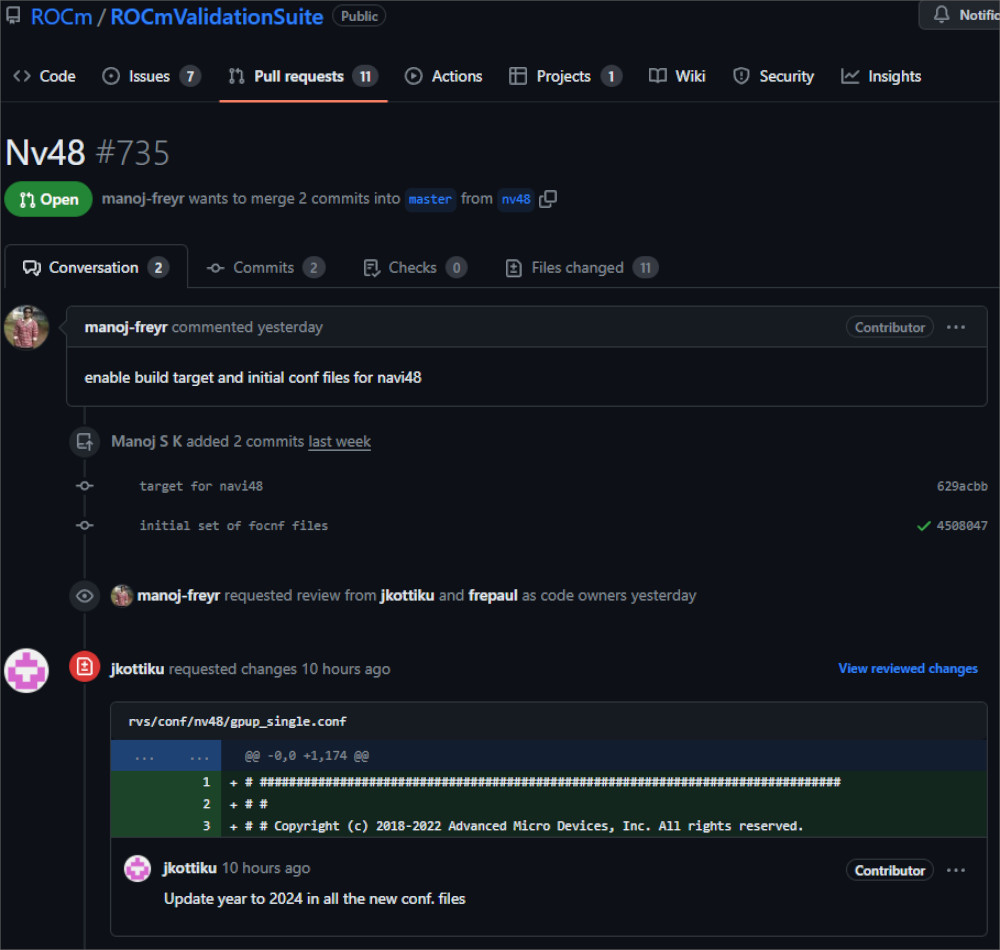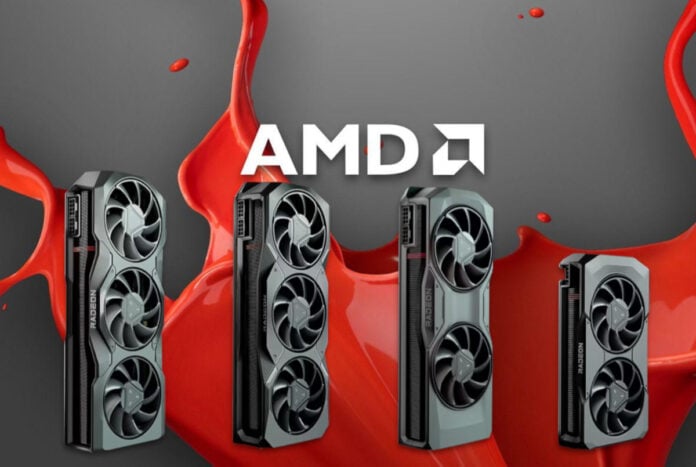AMD’s next generation of Radeon GPUs is pretty much confirmed at this point. The AMD RDNA 4-based Navi 48 GPU is the first to crop up on a ROCm GitHub. Long story short, this means it’s highly likely that Team Red’s labs are currently testing early silicon.
ROCm is an acronym for Radeon Open Compute platform. Nowadays, it simply references AMD’s open-source stack for GPU compute, hence the significance. The initial post might be a bit confusing, but the gist is that engineers are actively submitting changes to the code repository. Developers colloquially refer to this as “code commits,” which, at the very least, confirms Navi 48’s development.

Now that we’ve got that out of the way, we can’t glean much else within the ROCm GitHub. However, as per the rumour mill, AMD’s RDNA 4 GPU architecture could clock above the 3GHz mark. Moore’s Law Is Dead recently claimed that Navi 48 and 44 engineering sample chips sit between 3GHz and 3.3GHz. If true, this makes it at least a couple hundred megahertz faster than manually overclocked RX 7900 XTX graphics cards.
Frequency aside, rumours also suggest that Navi 48 GPUs will measure around 300 to 350mm² and could be based on TSMC’s N4P node. This potentially slots it between the RX 7900 XT and RX 7900 XTX, at least in pure rasterization performance. Other than that, they’ll reportedly carry a 256-bit memory controller, likely paired with 20Gbps GDDR6 VRAM. The smaller Navi 44 GPU should sit between the RX 7600 XT and the RX 7800 XT using a 128-bit memory controller.
Last but not least, rumours suggest RX 8000 GPUs will debut later this year or by early 2025. This means that anything can change at short notice, so take these rumours with a tiny pinch of salt. In the meantime, don’t be afraid to grab an AMD Radeon RX 7900 XTX on Amazon. It’s still a fantastic GPU that’ll perform well for the next few years.

